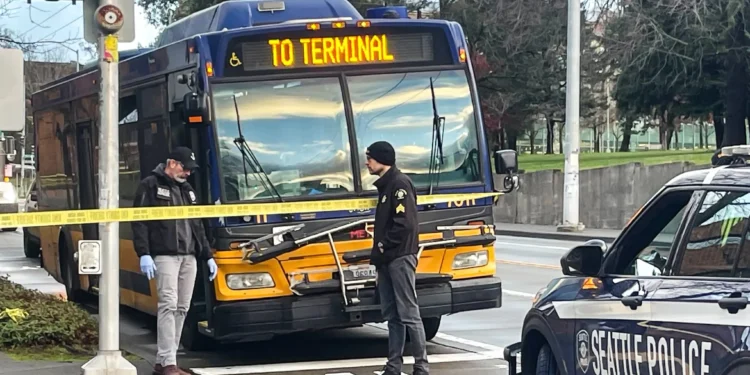King County Sheriff’s Office deputies and Seattle Police Department officers are investigating a non-life-threatening stabbing that occurred on a Metro bus near Pike Street and Minor Avenue in Seattle on Sunday.
Authorities said they have a description of the suspect, who left the scene, and are actively searching the area.
The incident involved just one person; no others were hurt on the bus, police confirm. Investigators did not say what bus route the bus was currently on when the stabbing happened.
The KCSO is expected to take the report and lead the follow-up investigation. They have not yet said what led up to the stabbing.
The Pike Street and Minor Avenue location places the stabbing in Seattle’s First Hill neighborhood near downtown, an area with high bus traffic where multiple Metro routes converge serving commuters traveling between Capitol Hill, downtown, and the International District.
The non-life-threatening classification indicates the victim sustained injuries requiring medical attention but not rising to the severity necessitating major trauma response, though any stabbing on public transit raises safety concerns for regular riders.
The suspect’s departure from the scene before police arrival demonstrates the challenges law enforcement faces responding to transit crimes, where perpetrators can quickly blend into crowds or board connecting buses before officers establish perimeter security.
The single victim suggests a targeted incident or personal dispute rather than random violence affecting multiple passengers, though investigators’ silence on circumstances leaves open questions about whether the stabbing resulted from confrontation or unprovoked attack.
King County Sheriff’s Office jurisdiction over Metro bus incidents reflects the agency’s contracted role providing transit security for King County Metro, with KCSO deputies routinely patrolling transit centers and investigating crimes occurring on buses throughout the county.
The lack of disclosed bus route information may indicate investigators withholding details to protect the investigation or simply reflects that route identification is not immediately relevant to suspect apprehension efforts focused on geographic area searches.
Sunday timing suggests lighter ridership than weekday peak hours, potentially meaning fewer witnesses to provide suspect descriptions or video evidence beyond bus-mounted security cameras that Metro maintains on its fleet.
The active area search indicates police believe the suspect remained in the vicinity rather than fleeing to distant locations, with officers likely checking nearby businesses, transit stops, and pedestrian corridors where the individual might seek shelter or transportation.
Metro bus stabbings remain relatively rare compared to the millions of annual boardings across King County’s transit system, though each incident generates rider anxiety and media attention disproportionate to statistical risk.
The investigative handoff to KCSO for follow-up work follows standard protocols where Seattle Police provide initial response while Sheriff’s deputies handle ongoing investigation and prosecution of transit-related crimes under their Metro security contract.







